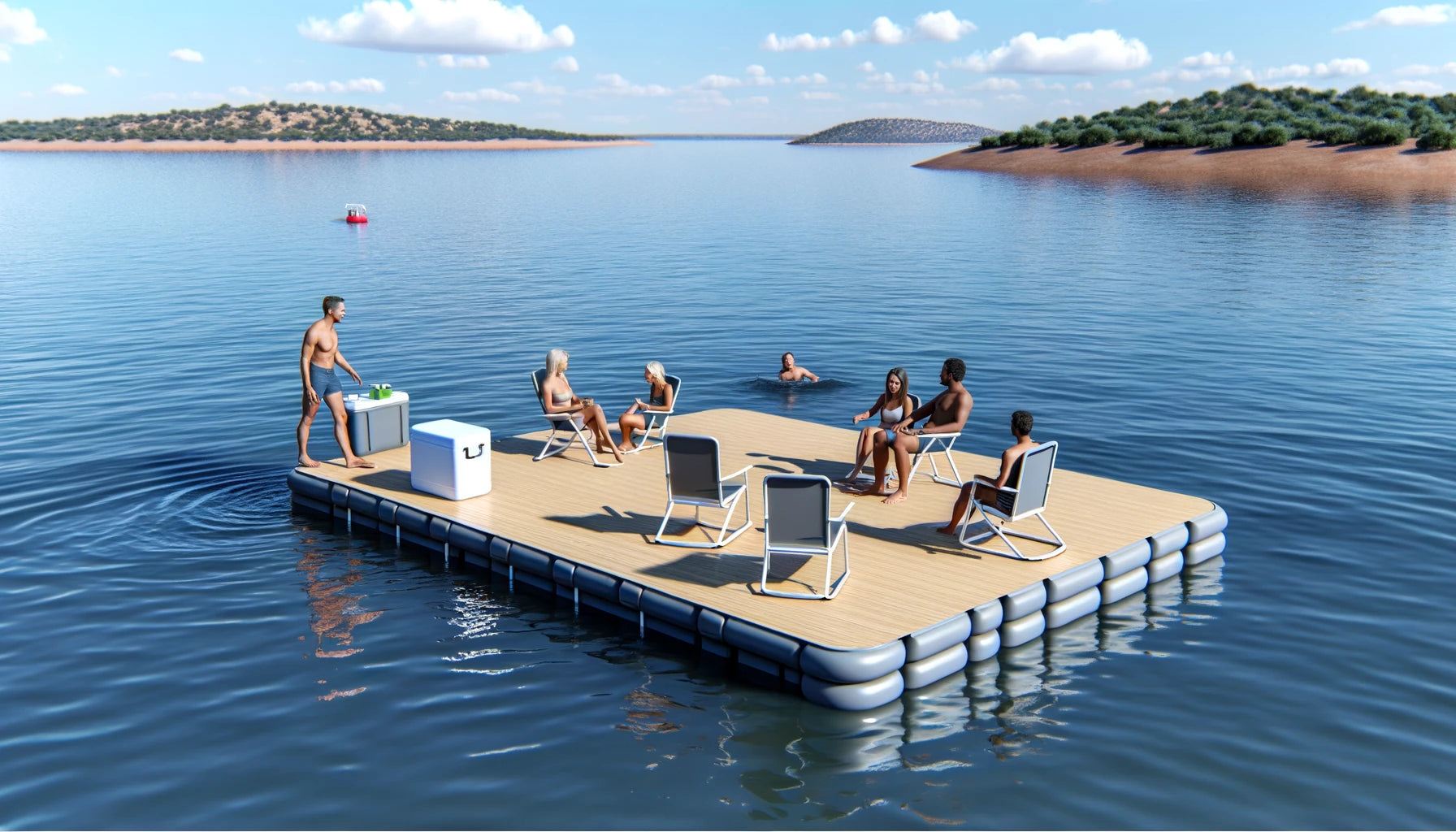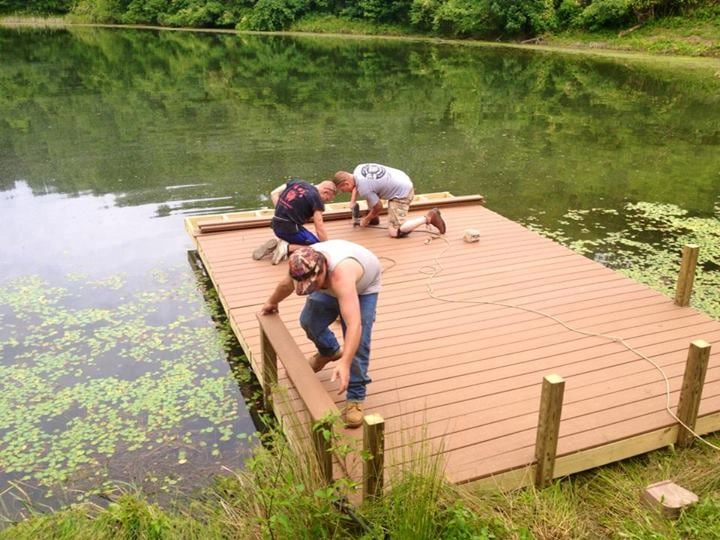Create the Perfect Docking Solution With Floating Docks
Floating docks existing a functional remedy for a variety of maritime needs, adapting perfectly to varying water levels and diverse vessel types. Their modular nature enables quick installation and moving, yet the option of ideal products and style features is vital for making certain both performance and visual allure. As we explore the important elements that contribute to the effectiveness of floating docks, several vital aspects relating to stability and maintenance will certainly emerge, increasing concerns concerning how to optimize your docking experience. The succeeding discussion will brighten these crucial considerations.

Benefits of Floating Docks
Floating docks deal many benefits that make them a suitable option for various maritime applications. Unlike fixed docks, floating docks increase and loss with the trend, making certain regular access for vessels.
In addition, floating docks are typically less complicated and quicker to mount compared to conventional fixed frameworks. Their modular style enables for straightforward setting up and disassembly, assisting in maintenance and relocation when essential. This versatility is especially beneficial for temporary applications or in settings where problems may transform.
Floating docks likewise tend to be extra ecologically friendly, as they reduce interruption to the seabed and bordering marine environments. Their buoyant nature reduces the threat of damage to marine life, advertising a healthier atmosphere. Additionally, these docks can be customized to suit various vessel dimensions, guaranteeing that they fulfill certain functional requirements - floating dock builder.
Eventually, the mix of adaptability, convenience of installment, and environmental considerations makes floating docks a very effective option for a large range of maritime needs.
Choosing the Right Materials
Picking the appropriate materials for floating docks is essential to make certain longevity, stability, and sturdiness. The choice of materials directly impacts the dock's efficiency in different environmental conditions, consisting of direct exposure to water, sunshine, and potential wear from marine traffic.
Common materials used for floating docks include aluminum, timber, and high-density polyethylene (HDPE) Light weight aluminum is light-weight, corrosion-resistant, and calls for very little upkeep, making it an exceptional selection for long life. Nonetheless, its first expense can be higher compared to other materials.
Timber, while visually attractive and offering a conventional look, can be susceptible to rot and insect damages otherwise appropriately treated. Using pressure-treated wood or normally sturdy types like cedar or redwood can reduce these problems.
HDPE is a popular choice due to its resistance to UV rays and chemicals, along with being eco-friendly. floating dock services. It is light-weight and offered in numerous shades, enabling customization
Ultimately, the right product choice will certainly depend on details demands, consisting of budget, wanted appearances, and environmental factors to consider. Cautious evaluation of these aspects will cause a successful and durable floating dock option.
Design Considerations for Security
When developing floating docks, ensuring stability is a basic aspect that can dramatically affect their functionality and security. Security in floating dock design is influenced by different variables, including buoyancy, weight distribution, and the arrangement of components.
Weight distribution is vital; evenly dispersing lots throughout the dock prevents turning and boosts security. This can be attained via critical positioning of docking devices, such as fenders and cleats, in addition to appropriate spacing of floats. Furthermore, the dimensions of the dock ought to be thoughtfully planned. Wider layouts can supply raised security, especially in rough water conditions, while longer docks might need additional supports to prevent drooping.
Another vital factor to consider is the environmental influence, consisting of wave action and wind. Including functions such as sidewalls or skirting can help mitigate the impacts of environmental forces, preserving stability in adverse problems. Eventually, a combination of thoughtful design, product selection, and understanding of ecological aspects will produce a floating dock that fulfills both stability and security needs.
Setup Tips and Methods

Next, safeguard the necessary licenses and adhere to neighborhood laws, which might dictate installation techniques and environmental factors to consider. Engage a qualified contractor experienced in floating dock installations if required. Use top quality products designed for marine atmospheres to improve sturdiness and longevity.
When positioning the dock, straighten it alongside the shoreline to facilitate simple gain access to. Ensure that the anchoring system is robust, utilizing cinder block or helical anchors to maintain the dock against wind and wave activity. It's essential to account for seasonal water level changes, consisting of potential ice motion in chillier environments.
Throughout the installment, confirm the dock's floatation and security before finalizing the anchoring. Frequently check the setup for any type of indications of wear or damage. By complying with these methods and pointers, you can achieve a safe and secure, functional, and visually pleasing floating dock setup that fulfills your needs.
Upkeep and Care Standards
Caring and keeping for floating docks is vital to lengthening their lifespan and guaranteeing safe usage. Routine assessments need to be performed go to this website to determine any kind of signs of wear, damages, or aquatic development. Search for cracks, next page loosened fittings, or tarnished areas on the dock's surface, as these problems can compromise structural integrity.
Cleaning up is important. Use a stress washing machine to get rid of algae, barnacles, and debris, which can build up gradually. For stubborn growth, consider environmentally friendly cleansing agents that won't damage water life.
In addition, examine the mooring lines and anchors frequently to ensure they are totally free and secure from corrosion. Change any kind of torn or damaged lines promptly to maintain stability.
During severe weather condition, such as tornados or freezing problems, take precautionary steps. Protect the dock with extra mooring lines and, if possible, eliminate any type of removable elements to protect against damages.
Conclusion
In conclusion, the implementation of floating docks offers a functional and effective docking solution ideal for various maritime applications. Their versatility to fluctuating water levels, integrated with a modular style, enables very easy customization and moving. Picking proper materials enhances both resilience and aesthetic appeal, while mindful consideration of security guarantees safety and long life. With correct setup and routine maintenance, floating docks can supply effective and trusted docking experiences for a vast array of vessels.
As we discover the necessary aspects that add to the performance of floating docks, a number of key factors concerning security and upkeep will certainly emerge, raising questions concerning exactly how to maximize your docking experience. Unlike repaired docks, floating docks surge and fall with the trend, making certain regular availability for vessels.When creating floating docks, guaranteeing stability is an essential aspect that can significantly affect their functionality and safety and security. check my blog Stability in floating dock design is influenced by various aspects, including buoyancy, weight distribution, and the arrangement of components. Eventually, a mix of thoughtful style, material option, and understanding of environmental aspects will certainly yield a floating dock that fulfills both stability and security needs.